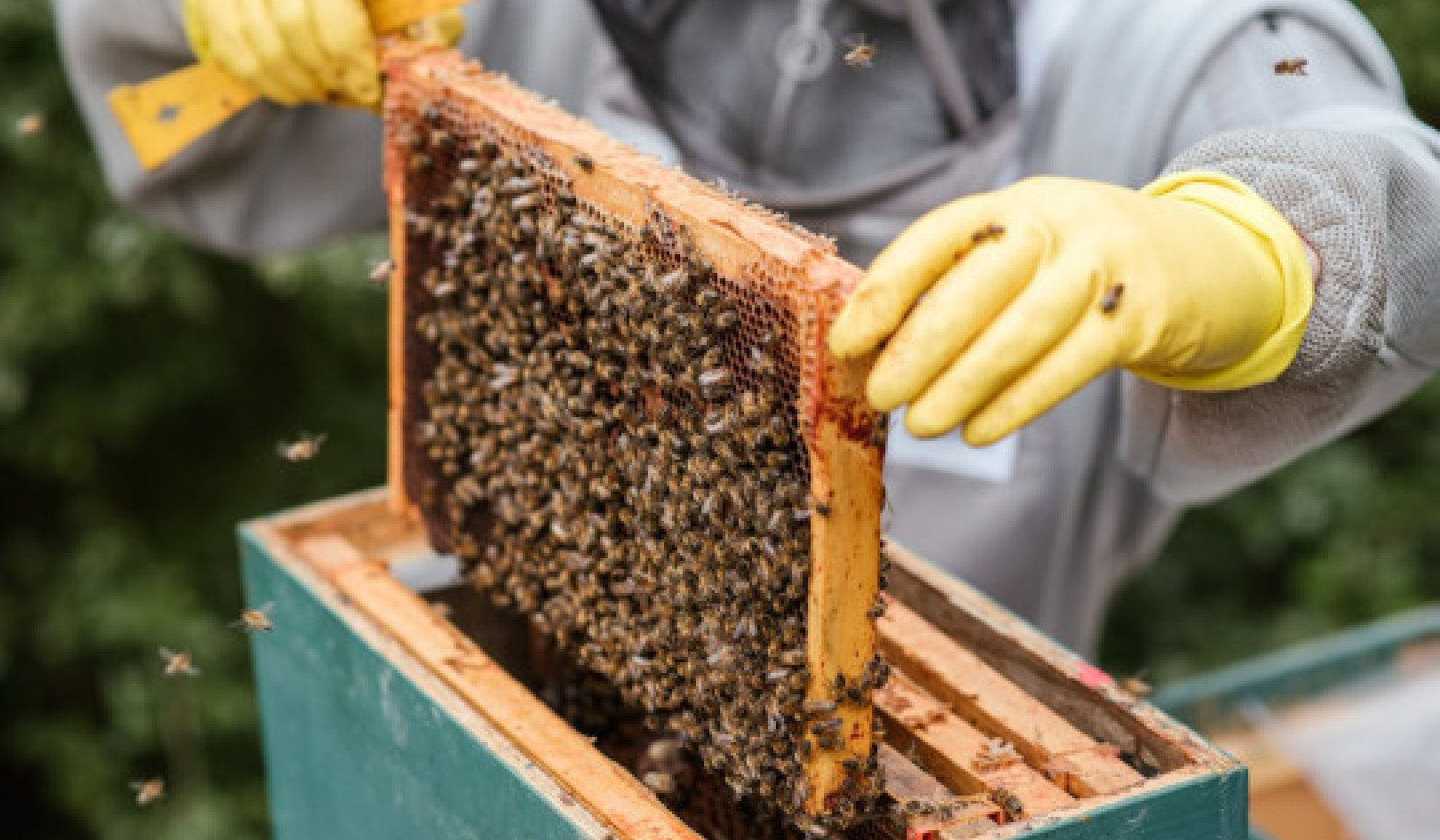
The numbers are startling. According to the U.S. Centers for Disease Control and Prevention, about 1.8 million more children in the U.S. were diagnosed with developmental disabilities between 2006 and 2008 than a decade earlier. During this time, the prevalence of autism climbed nearly 300 percent, while that of attention deficit hyperactivity disorder increased 33 percent. CDC figures also show that 10 to 15 percent of all babies born in the U.S. have some type of neurobehavorial development disorder. Still more are affected by neurological disorders that don’t rise to the level of clinical diagnosis.
And it’s not just the U.S. Such impairments affect millions of children worldwide. The numbers are so large that Philippe Grandjean of the University of Southern Denmark and Harvard T.H. Chan School of Public Health and Philip Landrigan of the Icahn School of Medicine at Mount Sinai in New York — both physicians and preeminent researchers in this field — describe the situation as a “pandemic.”
While earlier and more assiduous diagnosis accounts for some of the documented increase, it doesn’t explain all of it, says Irva Hertz-Piccioto, professor of environmental and occupational health and chief of the University of California, Davis, MIND Institute. Grandjean and Landrigan credit genetic factors for 30 to 40 percent of the cases. But a significant and growing body of research suggests that exposure to environmental pollutants is implicated in the disturbing rise in children’s neurological disorders.
What, exactly is going on? And what can we do about it?
Chemicals and the Brain
Some chemicals — lead, mercury and organophosphate pesticides, for example — have long been recognized as toxic substances that can have lasting effects on children’s neurological health, says Bruce Lanphear, health sciences professor at Simon Fraser University. While leaded paint is now banned in the U.S., it is still present in many homes and remains in use elsewhere around the world. Children can also be exposed to lead from paints, colorings and metals used in toys, even though these uses are prohibited by U.S. law (remember Thomas the Tank Engine), and through contaminated soil or other environmental exposure as well as from plastics in which lead is used as a softener. Mercury exposure sources include some fish, air pollution and old mercury-containing thermometers and thermostats. While a great many efforts have gone into reducing and eliminating these exposures, concerns continue, particularly because we now recognize that adverse effects can occur at exceptionally low levels.
But scientists are also now discovering that chemical compounds common in outdoor air — including components of vehicle exhaust and fine particulate matter — as well as in indoor air and consumer products can also adversely affect brain development, including prenatally.
Chemicals in flame retardants, plastics, and personal care and other household products are among those Lanphear lists as targets of concern for their neurodevelopment effects.
Chemicals that prompt hormonal changes are increasingly suspected to have neurological effects, says Linda Birnbaum, director of the National Institute of Environmental Health Sciences and National Toxicology Program. Among the chemicals now being examined for neurological impacts that occur early in life are flame retardants known as PBDEs that have been used extensively in upholstery foams, electronics and other products; phthalates, widely used as plasticizers and in synthetic fragrances; the polycarbonate plastic ingredient bisphenol A, known commonly as BPA; perfluorinated compounds, whose applications include stain-, water- and grease-resistant coatings; and various pesticides.
Precise Choreography
As Grandjean and Landrigan explain, the fetus is not well protected against environmental chemicals that can easily pass through the placenta. There’s evidence from in vitro studies, they say, that neural stem cells are very sensitive to neurotoxic In the past 30 to 40 years, scientists have begun to recognize that children and infants are far more vulnerable to chemical exposures than are adults.substances. An infant’s brain is also vulnerable to such contaminants. At early stages of development — prenatally and during infancy — brain cells are easily damaged by industrial chemicals and other neurotoxicants. Such interference can affect how the brain develops structurally and functionally — effects that lead to lasting adverse outcomes.
“The brain is so extremely sensitive to external stimulation,” says Grandjean.
Historically, chemical neurotoxicity was examined in adults — often through cases of high levels of occupational exposure. In the past 30 to 40 years, however, scientists have begun to recognize that children and infants are far more vulnerable to chemical exposures than are adults. It has also been discovered that very low levels of exposure early in life can have profound and lasting effects.
Another important discovery is that understanding how an infant or child is affected by a chemical exposure involves far more than simply calculating potential effects on a physically smaller person. Stage of development — and timing of exposure — must also be considered. Early stages of brain development involve “a very precise choreography,” explains Frederica Perera, professor of Environmental Health Sciences at Columbia University’s Mailman School of Public Health. “Any chemical that can disrupt [brain] chemistry at this stage can be very damaging,” she says.
For example, explains Deborah Kurrasch, an assistant professor at the University of Calgary’s Cumming School of Medicine who specializes in neurological research, during the early stages of brain development — when cells are becoming neurons — “timing determines destination.”
Results of Kurrasch’s latest study investigating neurodevelopmental effects of BPA illustrate what she means. In a study published in January 2015, Kurrasch and colleagues examined the effects on neurodevelopment of BPA and a common BPA substitute, bisphenol S. Specifically, they investigated how exposure to BPA and BPS — at levels comparable to those present in her community’s local drinking water supply — might affect neuron development in zebrafish at a stage comparable to the second trimester of human pregnancy, when neurons are forming and moving to the correct location in the brain.
Many of the chemicals under scrutiny for their effects on brain development appear to act by interfering with the function of hormones essential for healthy brain development.“It’s as if they’re getting on a bus to where they need to be,” Kurrasch says. After exposure to BPA and BPS it was as if, explains Kurrasch, “twice as many neurons got on an early bus and half as many got on a late bus.” The researchers found that these exposures appeared to alter nerve development — neurogenesis — in a way that caused the fish to become hyperactive. Such an alteration, produced in this case by a “very little bit of BPA,” can cause permanent effects, Kurrasch says.
Many of the chemicals under scrutiny for their effects on brain development — BPA, phthalates, perfluorinated compounds, brominated flame retardants and various pesticides among them — appear to act by interfering with the function of hormones essential for healthy brain development. Among these are thyroid hormones, which regulate the part of the brain involved in a variety of vital functions, including reproduction, sleep, thirst, eating and puberty.
During the first trimester of pregnancy, the fetus is not making its own thyroid hormone, says Thomas Zoeller, director of the Laboratory of Molecular, Cellular and Developmental Endocrinology at the University of Massachusetts Amherst. If an environmental exposure to a substance such as a polychlorinated biphenyl or perchlorate interferes with the mother’s thyroid hormones in this period — as could happen through water pollution, for example — that could in turn affect her child at a critical stage of brain development.
Another thing to consider in the context of endocrine-disrupting chemical exposures, says Zoeller, is that a substantial portion of women of childbearing age in the U.S. have some iodine deficiency that may be suppressing their thyroid hormones. While these deficiencies may not be prompting clinically adverse effects, they may be sufficient to impair fetal neurodevelopment. “Impacts can happen at levels far below safety standards,” says Zoeller. And there are a great many chemicals to which such women may be exposed environmentally with the potential to affect thyroid hormones, among them PBDEs, PCBs, BPA, various pesticides, perfluorinated compounds and certain phthalates.
Something in the Air
One particularly concerning source of exposure to chemicals that are suspected to harm children’s brain development is air pollution, which is a complex mixture of various chemicals and particulate matter.
Research increasingly suggests that airborne contaminants can have subtle but significant effects on early neurological development and behavior.Perera and colleagues recently investigated the links between exposure to polycyclic aromatic hydrocarbons, a fossil fuel–related component of air pollution, and incidence of ADHD in 9-year-olds. Their study found that mothers who were exposed to high levels of PAH during pregnancy were five times more likely to have children with ADHD and to have children with more severe ADHD symptoms than those who did not have such exposure. While this study is the first to make such a connection, it joins a growing body of research pointing to links between outdoor air pollutants, including PAHs, and adverse impacts on children’s brain health and development.
Looking at air pollution’s effects on brain health is relatively new, explains Kimberly Gray, health science administrator at the National Institutes of Health. Research increasingly suggests that airborne contaminants can have subtle but significant effects on early neurological development and behavior, she says. In addition to links between prenatal PAH exposure and impaired brain function, researchers are also now investigating potential connections between black carbon, volatile organic compounds and fine particulate matter — among other components of air pollution — and impairments such as autism and lowered IQ.
In a study published in December 2014, Marc Weisskopf, Harvard T.H. Chan School of Public Health associate professor of environmental and occupational epidemiology, and colleagues looked at children whose mothers were exposed to high levels of fine particulate matter (PM2.5, particles 2.5 microns in diameter or smaller), particularly during the third trimester of pregnancy. The study, which involved more than 1,000 participants living all across the U.S., found that these children appeared to be twice as likely to be diagnosed with autism as children whose mothers had only low levels of such exposures. Exposure to larger particles — between 2.5 and 10 microns (what’s known as PM10) — did not appear to be associated with increasing risk for autism.
One of the disturbing recent realizations concerning environmental exposure to developmental neurotoxicants is how widespread exposure appears to be and the ubiquity of such compounds.“This is very important from an epidemiological point of view” because it “places a spotlight on the mother’s exposure,” says Weisskopf. It also highlights the importance of timing and neurodevelopmental effects. Although many other factors may contribute to autism, Weisskopf explains, this study strengthens the suggestion that environmental exposures can play a role. That it appears it is the very small particles that are associated with these effects adds to what other research is finding: What might seem quantitatively small can “be quite important” when it comes to affecting brain development, Weisskopf explains.
Widespread Exposure
As Grandjean and Landrigan point out, one of the disturbing recent realizations concerning environmental exposure to developmental neurotoxicants is how widespread exposure appears to be and the ubiquity of such compounds. “More neurotoxic chemicals are getting into products,” says Landrigan.
Phthalates, which are used as plasticizers — including in polyvinyl chloride plastics — and in synthetic fragrances and numerous personal care products, comprise one category of widely used chemicals that appear to have adverse impacts on brain development. Researchers at Columbia University’s Mailman School of Public Health recently found that children exposed prenatally to elevated levels of certain phthalates had IQ scores that were, on average, between 6 and 8 points lower than children with lower prenatal exposures. Children with reduced IQ scores also appeared to have trouble with working memory, perceptional reasoning and information processing speeds.
“Pretty much everybody in the U.S. is exposed.” — Robin WhyattThe phthalates examined in this study, known as DnBP and DiBP, are used in numerous household products, including toiletries and cosmetics, among them shampoo, nail polish, lipstick, hair styling products and soap, as well as vinyl fabrics and dryer sheets. Exposure levels associated with reduced IQ in the study are within the range that the CDC reports finding in its National Health and Nutrition Examination Survey, a nationwide ongoing biomonitoring assessment of chemical exposures. “Pretty much everybody in the U.S. is exposed,” says study co-author Robin Whyatt, professor of environmental health sciences at Columbia University Medical Center.
While such a drop in IQ may sound small, Pam Factor-Litvak, the study’s lead author and associate professor of epidemiology at the Mailman School, notes that at the population — or classroom — level, this means fewer children at the high end of the intelligence scale and more at the less capable end. “The whole curve shifts downward,” she explains.
“Five or six IQ points may not sound like much, but it means more children requiring special education programs and fewer that are gifted,” says Maureen Swanson, Learning Disabilities Association of America’s Healthy Children Project director. “The potential economic impact is huge,” says NIEHS’s Birnbaum.
The Stress Factor
What prompts neurological disorders in children is “very complex,” notes Frederica Perera. Adding to the challenge of disentangling the various contributing factors is that while research on — and regulation of — chemicals typically looks at one substance at a time, people are exposed to multiple chemicals concurrently. Further adding to this complexity when it comes to brain development are social stresses that “act on the same part of the brain region,” explains University of Rochester professor of environmental medicine Deborah Cory-Slechta. She and others are finding increasing evidence that nonchemical stressors such as maternal, domestic and community distress can prompt adverse effects on early brain development, either on their own or in combination with neurotoxic chemicals.
Birnbaum says this apparent interaction between chemicals and nonchemical stressors is “very concerning and very important.”
Epidemiological studies, Cory-Slechta explains, typically correct for what are called confounding factors — other conditions that might influence the condition being measured. Many studies, she says, “are clearly not modeling what is going on in the human environment.” What she and her colleagues hope to do is “reproduce in animal studies what goes on in human communities,” particularly in communities that are most vulnerable to adverse social stressors and most exposed to chemical contaminants, including lead, pesticides and air pollution.
Lead and stress affect the same part of the brain, she says, and so can act synergistically very early in life to produce permanent changes in brain structure. These changes can result in lowered IQ, learning and behavioral problems. Assuming we want to stop harming our children’s brains, how do we proceed?
Cory-Slechta’s lab is now working on replicating conditions of stress and chronic deprivation in animal models that would mirror those experienced by communities of poverty. The aim is to better understand how these effects cross the placenta and become the fetal basis of lifelong disorders. She and her colleagues are investigating, not only associations between exposures and neurodevelopment, but also the mechanisms by which effects occur.
What to Do?
Assuming we want to stop harming our children’s brains, how do we proceed?
An important step is to improve our ability to determine which chemicals have neurodevelopmental effects. A rapid screening system would be ideal, says Birnbaum, because there are so many chemicals — including newly invented ones — to which people are exposed. While such a program to test large numbers of chemicals quickly using robotics has been launched by NIH, EPA and other federal agencies, there are tens of thousands that may be in use, most of which have not been fully tested for these effects.
When it comes to reducing existing exposures, some chemicals can be avoided through consumer choice. But it’s often difficult, given that many of these substances are used — like BPA on receipts — in products that don’t carry ingredient labels. Others, including air pollutants, are much harder given their ubiquity or lack of available alternatives. And, as Maureen Swanson notes, such choices are not necessarily feasible for people at all economic levels, which raises environmental justice issues.
Grandjean and Landrigan point out that the U.S. system of chemical regulation, which lacks requirements for full premarket toxicity testing, does not do a very good job when it comes to proactive chemical safety. “Untested chemicals should not be presumed to be safe to brain development, and chemicals in existing use and all new chemicals must therefore be tested for developmental neurotoxicity,” they wrote in an article published in The Lancet.
While some sources of neurotoxicity might appear to have been adequately addressed, they have not. For example, considerable progress has been made in curtailing lead exposure through policy and public health education in the U.S. and elsewhere. However, current understanding is that virtually any amount of lead exposure can cause damage, and harmful exposures continue — especially in countries where leaded paints and gasoline are still used . And in the U.S., CDC funding for lead prevention programs was dramatically reduced in 2012.
When it comes to protecting the exquisitely sensitive developing brain, the measures currently used to assess chemical risk and set safety standards fall short, says Cory-Slechta.Meanwhile, children around the world — especially in less well-off countries — continue to be exposed to dangerous neurotoxicants released in industrial emissions, from waste sites and through child labor. Examples abound, and include exposures to chemicals released in electronics recycling in various locations in Asia and Africa, to lead and mercury from mining activity, to agricultural pesticides, to products contaminated with heavy metals, including food and candy.
When it comes to protecting the exquisitely sensitive developing brain, the measures currently used to assess chemical risk and set safety standards fall short, says Cory-Slechta. “It should be about primary prevention, but it’s not,” she says.
In the absence of what many environmental health advocates feel is adequate U.S. federal regulation of chemicals, many individual U.S. states have recently passed their own laws to protect children from harmful chemical exposures. Many address chemicals with neurotoxic effects, particularly those of heavy metals such as cadmium, lead and mercury. And even though some states are beginning to include language in their legislation to protect pregnant women from chemical hazards, this timing of exposure is left largely unaddressed.
While we now know a great deal about developmental neurotoxicants, more such exposures appear to be occurring than ever before. And there appears to be wide agreement among researchers that these exposures are taking a toll on the world’s children.
“To me it is very clear we have to set up a different system to better protect the brains of the future,” says Grandjean.
![]() This article originally appeared on Ensia
This article originally appeared on Ensia
About the Author
 Elizabeth Grossman is an author and journalist Elizabeth Grossman is an independent journalist and writer specializing in environmental and science issues. She is the author of Chasing Molecules, High Tech Trash, Watershed and other books. Her work has also appeared in a variety of publications, including Scientific American, Yale e360, the Washington Post, TheAtlantic.com, Salon, The Nation, and Mother Jones.
Elizabeth Grossman is an author and journalist Elizabeth Grossman is an independent journalist and writer specializing in environmental and science issues. She is the author of Chasing Molecules, High Tech Trash, Watershed and other books. Her work has also appeared in a variety of publications, including Scientific American, Yale e360, the Washington Post, TheAtlantic.com, Salon, The Nation, and Mother Jones.
Book by this author:
 Chasing Molecules: Poisonous Products, Human Health, and the Promise of Green Chemistry
Chasing Molecules: Poisonous Products, Human Health, and the Promise of Green Chemistry
by Elizabeth Grossman.
Click here for more info and/or to order this book on Amazon.
























